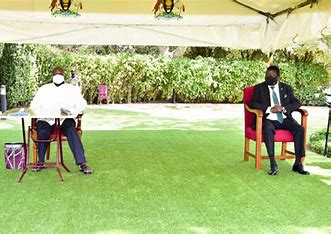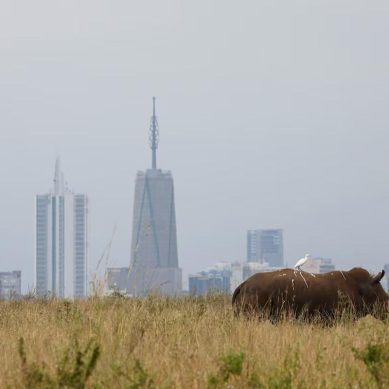
Towards the beginning of the 1980s the University of Nairobi, Kenya, was the only University in the whole world that was training student in the Biology of Conservation at masters level. I was one of the first three Ugandans to benefit from the programme, but the last of them.
The programme was a multidisciplinary one and conducted at the Department of Zoology at Chiromo Campus. The first of us was the late Dr Pampa, who commenced his studies in 1977. The second one was Prof Alfred Kambe, who commenced his studies in 1978. I was the third and commenced my studies in 1980.
The programme drilled us in the science of ecology, ecological techniques and conservation and management of natural resources, particularly the biological ones. Kambe lives in the United States of America. So, I am the only one of the three of us living in Uganda. I have been doing so continuously since 1991 when I joined Makerere University in the Faculty of Science as a lecturer.
While I produced several natural resource managers at master’s level who are now managing and conserving our resources, I have been continually studying why it is difficult to manage and conserve them meaningfully and effectively during these Movement times (1986-to present).
I have constructed the above topic so that I can share with you the reasons why the NRM government can never conserve or manage Uganda’s environment meaningfully and effectively. If you asked me what my thesis statement for this article is, I would quickly tell you that it is “The NRM government can never conserve or manage Uganda’s environment meaningfully and effectively”.
Historically, the rulers of Uganda used the environment to wage a protracted war against the governments of Idi Amin, Apollo Milton Obote and Tito Okello. In an attempt to dislodge Idi Amin, they fought mainly in the forests of Busoga, in what is today called Mayuge District. As evidence of this there is a big population of Banyarwanda involved in various environmentally-destructive economic activities such as logging, sand mining and sugarcane growing. An area, which once had elephants and buffaloes in the 1960s and thick forests, is undergoing accelerated desertification, thanks to the basically nomadic pastoral people learning to settle.
To dislodge Apollo Milton Obote and later Tito Okello, they fought in the Luwero Triangle of Buganda. They destroyed many forests and bushes, and in the process served as the main factor in the extinction of numerous species of wildlife (both plants and animals. When they extended their violence into northern Uganda to subdue resistance there, they destroyed lots of forests, bushes and wildlife, apart from using chemicals to pollute crops and water so that their adversaries could not consume them.
There is need for academic researchers to study the effects of warring of the rulers of Uganda on our agroecological systems, environment and conservation between 1972 and now.
Culturally, the NRM rulers, who are largely of the nomadic pastoral human energy system have been changing our biocultural landscape, as they turn themselves into latter day modern settlers. They are voraciously grabbing the ancestral lands of the traditionally settled indigenous people of manly Buganda, eastern and northern Uganda.
Whole ecosystems are being grabbed, and as they establish monoculture systems of agriculture and ranches, they are reducing the conservation value of the areas they are occupying. Sometimes they are using money to buy the impoverished people from their land. If the people try to enjoy their right of resistance, they are forced off their land, at gun point, whereof they become internal refugees. There is need for academic scholars to study the effects of land grabbing on conservation in Uganda and expose the hypocrisy of our rulers who still give the impression that they are committed to the conservation of our biological resources.
Humanity is part of our biological resources and their custodian, but is succumbing to death because of being forced to the margins of nature to etch a living. The biocultural landscape is in danger of being deprived of any conservation value. This is already the case in Busoga, which used to boast of big game (elephants, lions, buffaloes, le0pards, cheetahs and zebras when I was growing up in the 1950s.
Today Busoga can only talk of a zoo in Jinja so that our children and grandchildren can see what they cannot see because the wilds have been erased, and the land is increasingly being grabbed by the rulers or those connected to them to establish sugarcane, sugarcane factories and oil palm plantations.
The nomadic-pastoral people in power have taken over agriculture from the indigenous people who used to balance crop production with conserving wildlife. They have taken over even the fresh waters, of especially Lake Victoria. They have relegated the professionals from agricultural and fisheries management, let alone the traditional cultivators and fishermen. They are managing agriculture and fisheries militarily. They have created things like Operation Wealth Creation (OWC), ostensibly to spur crop and animal husbandry, and a military outfit ostensibly to prevent illegal fishing.
However, this has turned out to be conduits for the soldiers involved to become rich while rendering the professionals redundant. Conservation of food crops and fish is in jeopardy. This is being made worse by the introduction of genetically modified seeds in our biocultural landscape and genetically modified fish in our freshwaters, even by foreigners from as far as China, Germany and India.
One factor that undermines the capacity of the NRM government to effectively conserve and manage the environment at the national level is the unity of greed and selfishness that has consummated the rulers and cadres of the ruling party with sparks to the rest of the population. It is greed and selfishness that has precipitated corruption across all social strata in the country as a complex.
The corruption complex is multidimensional, with the dimensions interwoven and cross-fertilising and, therefore, systematic approach to it. The dimensions of corruption include the ecological, environmental, economic, financial, social, political, biological, cultural, ethico-moral, academic, intellectual, foreign aid, infrastructural, executive, legislative, judicial, development, spiritual and many more dimensions. Therefore, simplistic approaches that focus on just financial impropriety, provide half-hearted solutions, which end up complicating the corruption complex further.
That is why we should not celebrate the institutionalisation of Inspector-General of Government, which assumes that corruption is only government-based and financial, and concentrates on just the inappropriate flows of public money. In fact, most corruption occurs outside government. The point I want to make here is that it is extremely difficult to conserve and manage a country’s environment or environments overburdened by intertwined types of corruption.
The government of Uganda has allowed many avenues of ecological and environmental corruption and environmental injustice to spring up and persist in our environment, thereby undermining government’s capacity to conserve the environment effectively and manage it wisely. One such avenue is what is called business confidentiality, which is the principal avenue through which government and corporations pursue environmentally dangerous “development” projects secretly behind the full view of the public. Together they pretend to be developing the country and the people through such projects, yet the aim is to build and sustain the money economy. The politicians who give political approval to such projects, no doubt, obtain commissions, that the World Bank regards as legitimate aspect of global business.
However, the environment continues to degrade supersonically as such projects are imposed on it. The government’s capacity to conserve the environment and manage it wisely is undermined by its plot with corporations to impose the burden of environmentally dangerous projects on the environment.
Environmentally-dangerous projects in Uganda include atomic energy development, oil development, oil palm growing, sugarcane growing, growing of marijuana, construction of hydropower dams, and construction of airports, to name but a few. In all cases, natural vegetation is removed over large tracts of land, or else waterfalls are erased to give way to hydroelectric power facilities, whereby endemic natural vegetation on the Nile is dammed by rising water.
So long as government continues to pursue such exploitative projects at the expense of other possibilities, it can forget about effective conservation and management of the environment. This is being confounded by President Museveni’s almost religious political commitment to infrastructure development. His development philosophy is that infrastructure must come before nature, environment and the people. Obviously, he is not familiar with cultural and environmental development.
In fact, personal presidential intervention in Uganda’s development process is the main reason why there has been accelerated environmental conservation in recent times. Professionals have had little role in either allowing or rejecting environmentally destructive projects.
For lack of space, let me just list some the other pathways of environmental destruction that have consistently undermined the government’s capacity to conserve the environment effectively and manage it wisely:
1. Government continues to allow people of basically nomadic-pastoral human energy system to grab land in the agriculturally productive agroecological systems, thereby destroying natural ecosystems.
2. The leadership of NRM is highly environmentally unconscious and over-consumptive.
3. Overuse of genetically modified crops, which require clearance of natural vegetation off large swathes of land and application of industrial fertilisers, pesticides and herbicides
4. Mining of gypsum in Queen Elizabeth National Park
5. Establishment of industrial parks and garage-type factories in swampy areas
6. Continuing importation of highly polluting already used vehicles, mainly from Japan.
7. Booming plastics industry
8. Unregulated clearing of natural vegetation from hills and replacing it with personal residential and other buildings.
9. Replacing natural domestic animals and plants with foreign, often genetically modified plants and popularising them as superior to our local and traditional ones.
10. Proliferation of burial practices that use both wooden and plastic coffins as well as concretised and tiled graves.
11. Unplanned and unregulated urbanisation.
12. Education, which teaches that the environment is for exploitation and that we are apart from and not part of it.
If I had the time and space, I would definitely expound on each and every one of these pathways of environmental destruction, which are undermining government’s capacity to conserve the environment effectively and manage it widely. For the time being suffice for us to know that they exist, and that they need to be taken seriously in any effort to conserve Uganda’s environment effectively and manage it wisely.
The environment is both our gigantic home and gigantic outdoor hospital. However, it can only serve as such if it is clean, safe and secure, and this is only possible if it is conserved effectively and managed wisely. This must be practical, not theoretical or lingual, which seems to be the case in Uganda of today.
- A Tell report / By Prof Oweyegha-Afunaduula, a former professor in the Department of Environmental Sciences of the Makerere University, Uganda











